Complete Solutions to Cell Cycle And Cell Division of chapter CELL CYCLE AND CELL DIVISION of Class 11 book with complete answers and questions
| Class 11 | BIOLOGY |
| Chapter | CELL CYCLE AND CELL DIVISION |
| NCERT FINGERTIPS | Cell Cycle And Cell Division |
| Number Of Questions | 100 |
| Academic Year | 2023-24 |
Amitosis usually occurs in
01:03View SolutionWhich one is the correct sequence of a cell cycle?
01:01View SolutionIdentify A,B,C and D in the given diagram depicting cell cycle and select the correct option.
 02:01View Solution
02:01View SolutionYeast cell divide once in approximately every
01:08View SolutionHuman cells in culture show a cell cycle to be completed in approximately.
01:32View SolutionWhich phase occupies the maximum part of cell cycle?
01:16View SolutionThis phase of cell cycle is a period of intense synthesis and growth. It constitutes 95% of the duration of cell cycle. It is
02:14View SolutionRead the following statements about cell division and select the correct ones.
(i) M phase represents the phase when actual cell division occurs and I phase represetns the phase between two successive M phases.
(ii) In the 24 hours average duration of cell cycle of a human cell, cell division proper lasts for only about an hour.
(iii) M phase constitutes more than 95% of the duration of cell cycle.01:37View SolutionWhich of the following phases of the cell cycle is not a part of interphase?
01:03View SolutionA cell cycle includes
01:30View SolutionIn which stage DNA replication takes place ?
01:08View SolutionSynthesis of histone proteins occurs in
01:14View SolutionSelect the incorrect statement regarding S phase of interphase.
01:50View SolutionThe DNA content of individual cells and the number of cells in each phase of a cell cycle" can be determined using flow cytometry. Which of the following combinations of "phase of a cell cycle and its corresponding DNA content" can be considered normal?
(i) Diploid cells found in the `G_(0)` or `G_(1)` phase.
(ii) Cells with twice the normal DNA content in the early M phase.
(iii) Cells with twice the normal DNA content in the `G_(2)` phase.02:18View SolutionCell would normally proceed to mitosis without interruption
01:40View SolutionThe cells that do not divide further, exit `G_(1)` phase to enter an inactive stage called__ of the cell cycle.
01:31View SolutionWhich of the following pstatements is correct ?
01:34View SolutionIn which of the following stages, a choromosome is minimum coiled?
01:08View SolutionWhich of the following statements is correct regarding `G_(0)` phase?
04:17View SolutionBest material for studying mitosis in laboratory is
01:03View SolutionMitotic spindle is mainly composed of __ proteins.
01:01View SolutionMicrotubules are absent in
01:16View SolutionCentrosome undergo duplication during (i) of (ii) and begin to move towards opposite poles of the cell during (iii) state of (iv).
01:42View Solution___ is the best stage to count the number and study the morphology of chromosomes.
01:34View Solution____ is characterised by all the chromosomes coming to lie at the equator, with one chromatid connected by its kinetochore to spindle fibres from one pole and its sister chromatid connected by its kinetochore to spindle fibres from the opposite pole.
01:36View SolutionRead the following statements.
(i) In mitotic cell division chromosome number is halved.
(ii) Centromere is the point where two sister chromatids are held together.
(iii) The period between two successive mitotic divisions is known as telophase.
(iv) In `G_(1)` phase of cell cycle protein and RNA are synthesised.
Which of the above given statements are correct?01:44View SolutionYou are provided with floral buds of Chrysanthemum in your class and are asked to count the chromosomes, then which of the following stages would you prefer to look into?
01:12View SolutionDuring karyokinesis, the spindle fibres get attached to condensing chromosome at a highly differentiated region. This region is called as
01:48View SolutionIdentify the structure indicated by labels (i),(ii),(iii) and (iv) and select the correct option.
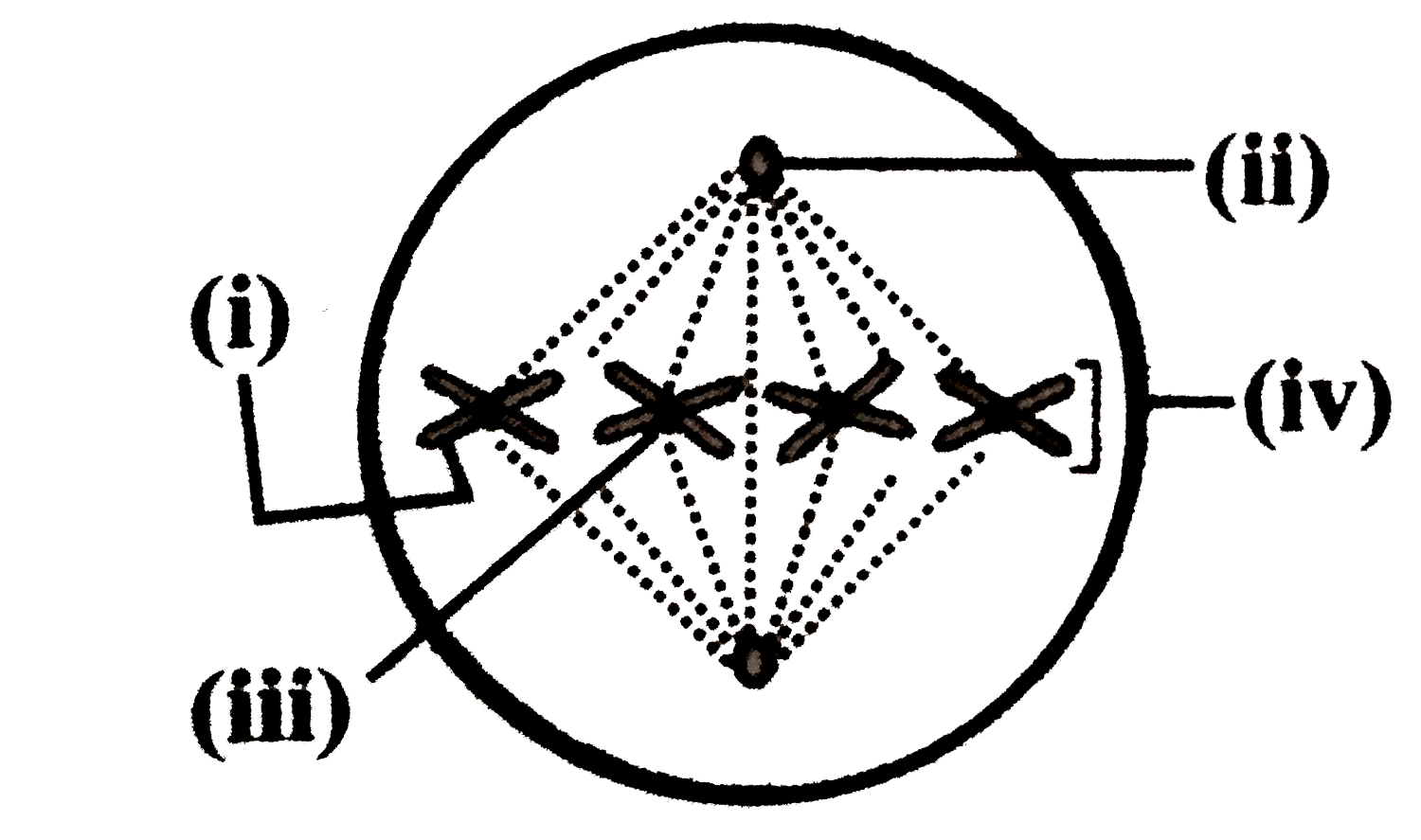 01:38View Solution
01:38View SolutionWhich of the following statements is not correct regarding colchicine?
02:22View SolutionColchicine is a cell pison which arrests cell division at __ and can induce ___
01:31View SolutionSpindle formation can be disrupted by exposing cell to the microtubule poison such as
01:14View SolutionAt which stage of mitosis, the two daughter chromatids separate from each other, migrate towards the opposite poles and are now referred to as chromosomes of the future daughters nuclei?
02:12View SolutionDuring anaphasic movements of chromosomes, ___ of each chromosome is/are towards the pole and ___ of the chromosome trail(s) behind.
01:28View SolutionSelect the correct mathc
01:08View SolutionThe separation of two chromatids of each chromosome at early anaphase is initiated by
02:09View SolutionMatch column I with column II and select the correct option from the given codes.
`{:("Column I","Column II"),("V-shaped at anaphase",(ii)"Acrocentric chromosome"),("L-shaped at anaphase",(ii)"Metacentric chromosome"),("J-shaped at anaphase",(iii)"Telocentric chromosome"),("I-shaped at anaphase",(iv)"Sub-metacentric chromosome"):}`01:22View SolutionWhich of the following is key event of anaphase of mitotic division?
01:39View SolutionSelelct the incorrect mathc regarding mitotic cell division.
`{:((i)"Prophase",-,"Chromosomes begin to uncoil"),((ii)"Metaphase",-,"Chromatids move aprt"),((iii)"Telophase",-,"The nuclear membrane reappears"),((iv)"Late",-,"Each chromosome consists of two"),((v)"Interphase",-,"Chromosomes are not distinct"):}`01:59View SolutionWhat is true about telophase stage of mitosis?
02:09View SolutionRefer to the given figures and answer
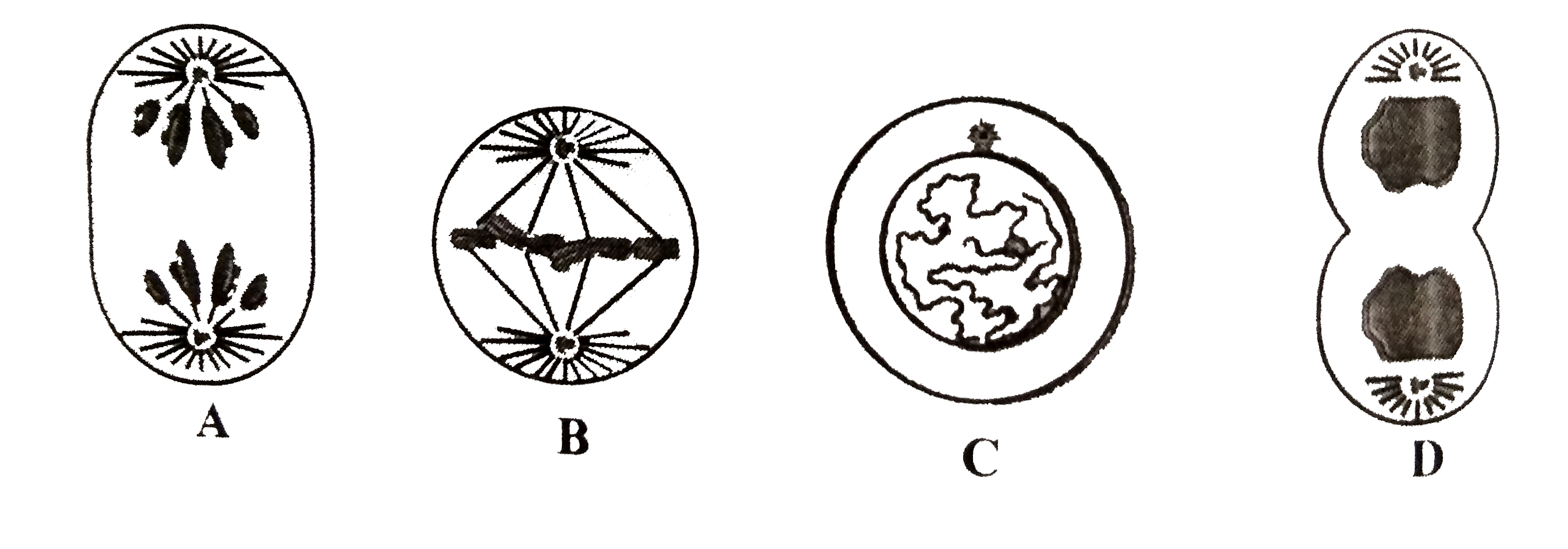
Identify the given stages of mitosis and select the correct option01:51View SolutionRefer to the given figures and answer

Which of the following show the correct sequence of the given mitotic stages?01:48View SolutionRefer to the given figures and answer
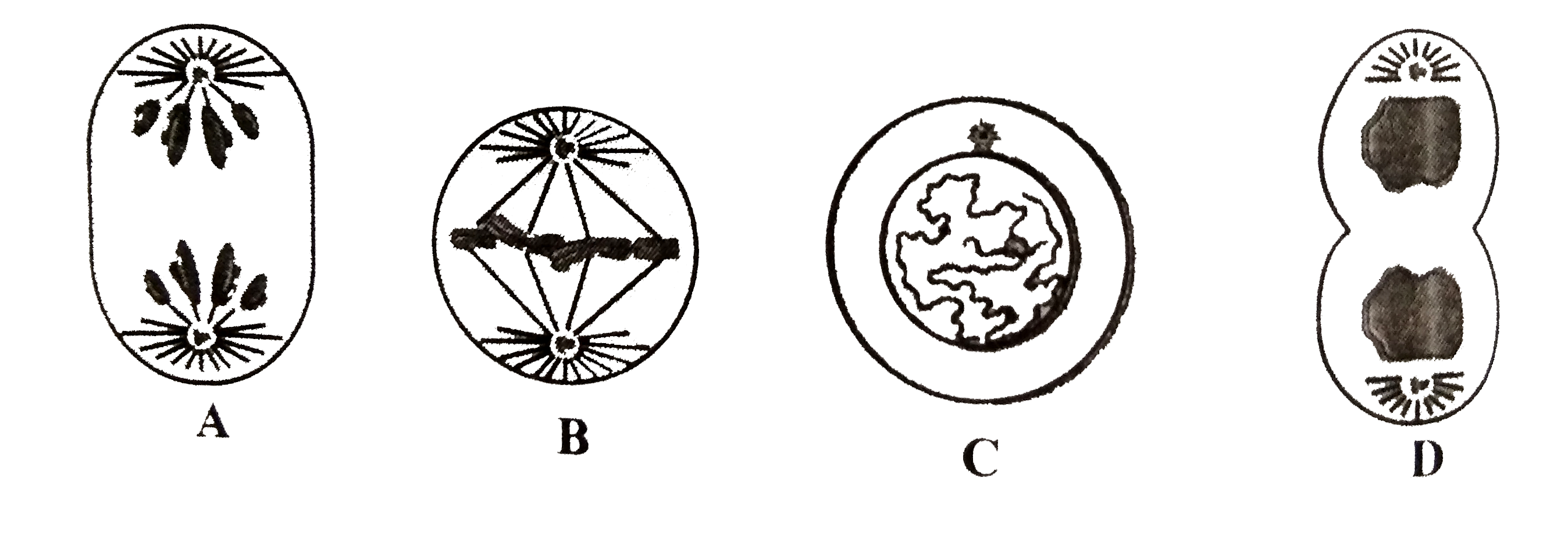
At which of the given stages of mitois, chromosomes appear in V,L,J and I shapes.01:29View SolutionRefer to the given figures and answer

Read the given statements which represent the features of the figures A,B,C and D Mathc them correctly and select the correct option.
(i) Chromosomes appear like a ball of wool (spireme stage)
(ii) Reformation of nuclear envelope, nucleolus, Golgi complex and ER
(iii) Formation of equatorial plate
(iv) Splitting of centromeres01:39View SolutionMatch the column I with column II and select the correct option from the given codes.
`{:("Column I","Column II"),("Disintegration of nuclear membrane",(i)"Anaphase"),("Appearance of nucleolus",(ii)"Prophase"),("Division of centromere",(iii)"Telophase"),("Replication of DNA",(iv)"S-phase"):}`01:20View SolutionWhich phase of mitosis is essentially the reverse of prophase in terms of nuclear changes?
02:31View SolutionThe given graph shows the change in DNA content during various phases (A to D) in a typical mitotic cell cycle. Identify the phases and select the correct option.
 02:37View Solution
02:37View SolutionA cell's division time is 1 minute, in 20 minutes, a culture tube (culture medium) is `1//8^(th)` filled with cells. When the tube will be fully filled?
01:48View SolutionCytokinesis in n animal cell takes place by ___ method in ____ method in ___ direction.
01:32View SolutionIf a tissue has at a given time 1024 cells, how many cycles of mitosis had the original parental single cell undergone?
02:29View SolutionSpindle usually persists in the form of ___ during ___ method of cytokinesis.
02:21View SolutionMatch column I with column II and select the correct option from the given codes.
`{:("Column I","Column II"),("Division of nucleus",(i)"Interphase"),("Division of cytoplasm",(ii)"Cytokinesis"),("DNA replication",(iii)"Syncytium"),("Karyokinesis not followed by cytokinesis",(iv)"Karyokinesis"):}`01:17View SolutionThe given diagram depicts cell plate method of cytokinesis in plant cells. Identify A,B and C
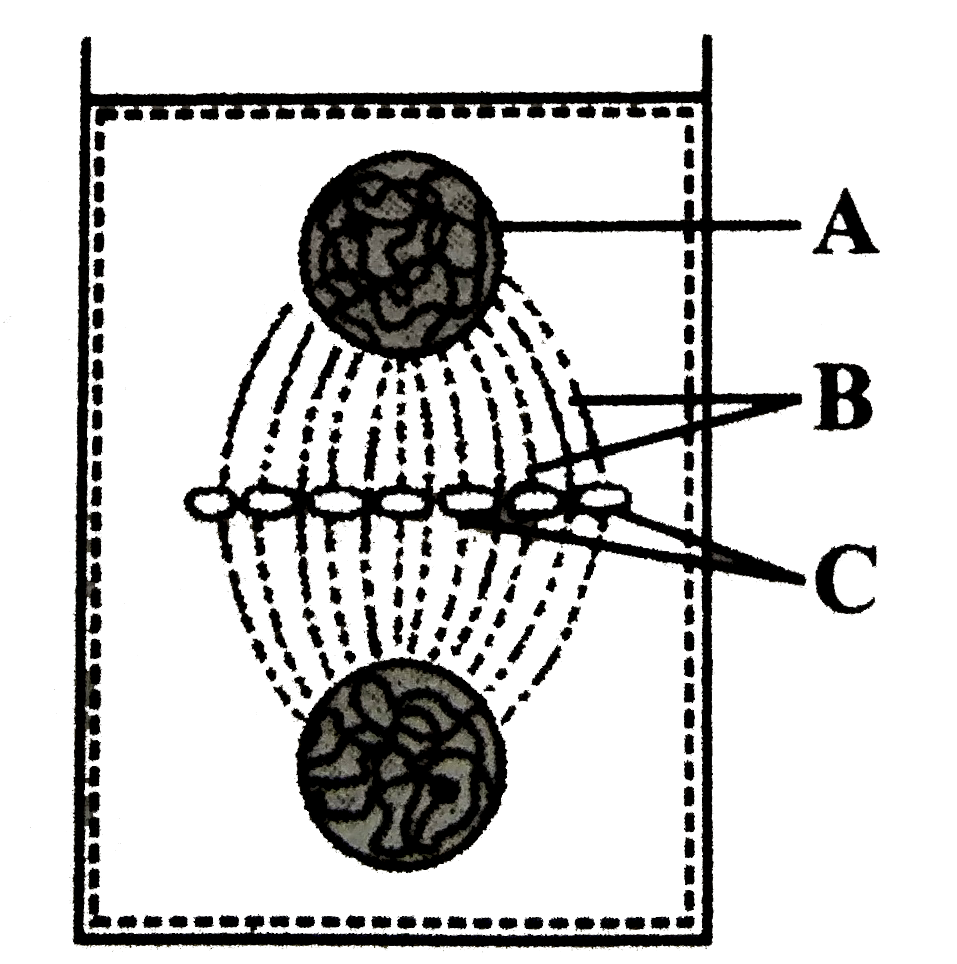 01:11View Solution
01:11View SolutionPhragmoplast is related to
01:06View SolutionThe role of mitosis is not merely to divide a cell into two daughter cells but to ensure genetic continuity from one cell generation to another cell generation. The mechanism ensuring genetic continuity is
01:53View SolutionChromosome duplication without nuclear division refers
01:07View SolutionMeiosis consists of
01:08View SolutionWhich of the following is not the feature of meiosis?
02:49View SolutionBest material to study meiosis is
01:20View SolutionThe term "meiosis" was given by
00:47View SolutionAt which of the following stages, the chromosomes appear single, thin and thread like?
01:54View SolutionZygotene of prophase-I is characterised by
01:50View SolutionCrossing over in diploid organisms is responsible for
01:43View SolutionWhich of the following is correct regarding the given figure?
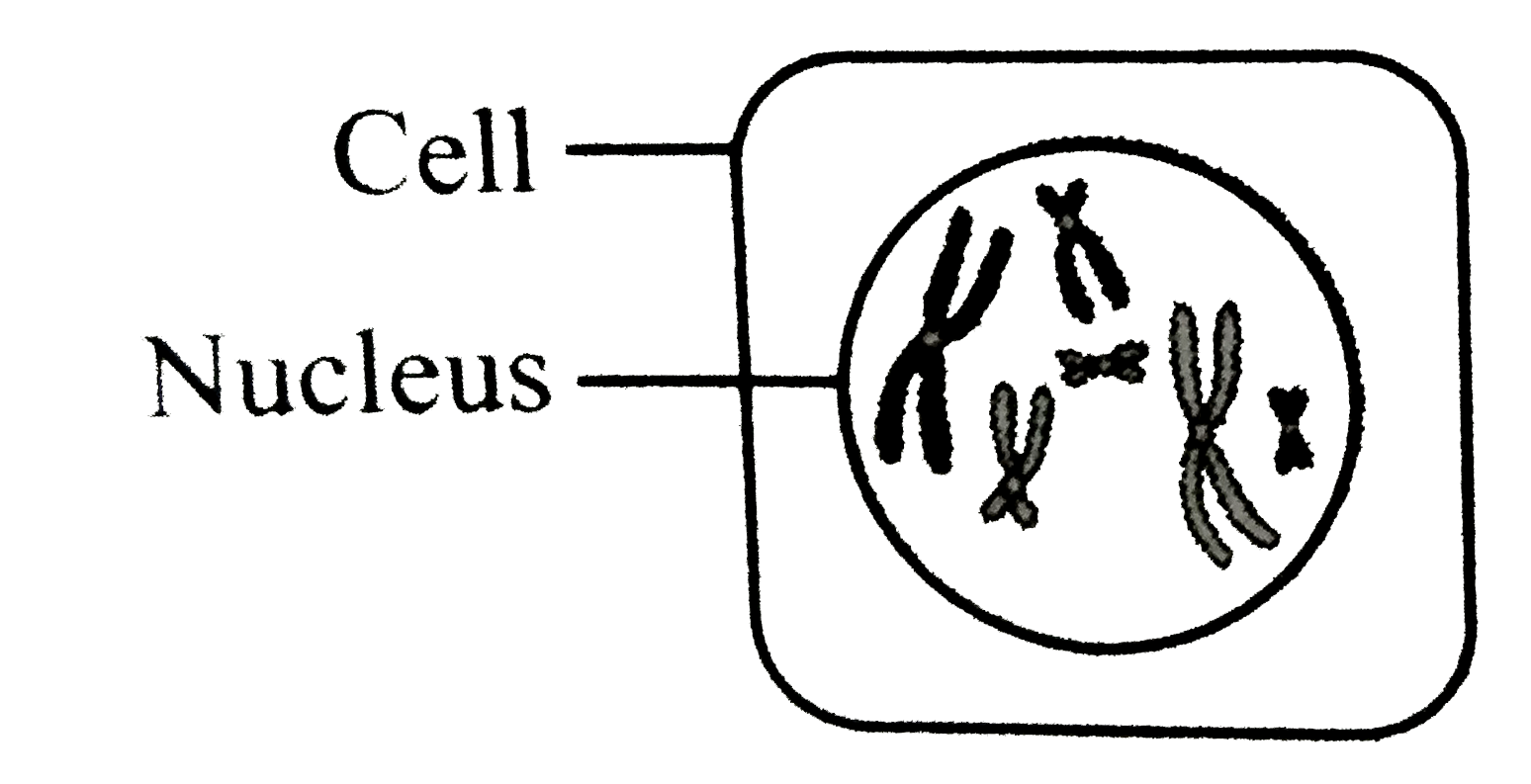 01:32View Solution
01:32View SolutionThe members of a homologous pair of chromosomes
02:09View SolutionWhich of the following correctly shows a pair of homologous chromosomes at the start of meiosis?
01:54View SolutionWhich of the following is correct about bivalent?
(i) Bivalents are tetrads.
(ii) A bivalent means 4 chromatids and 2 centromeres.
(iii) One bivalent consists of 2 homologous chromosomes.
(iv) Bivalents form in zygotene.01:34View SolutionThe process of crossing over is assisted by which of the following enzymes?
02:05View SolutionTo build up food reserves in the cytoplasm, chromosomes become unfolded to start transcription of mRNA and RNA, during which phase of meiosis ?
01:39View SolutionAt which stage, the homologous chromosomes separate due to repulsion, but are yet held by chiasmata?
01:44View SolutionDiplotene stage of prophase-I is characterised by
01:49View Solution(i) Thin thread like chromosomes with a beaded appearance
(ii) Appearance of recombination nodules
(iii) Formation of bivalents/tetrads
(iv) Terminalisation of chiasmata
(v) Appearance of chiasmata
Identify the different stages with respect to the above given features and select the correct option.01:25View Solution(i) Thin thread like chromosomes with a beaded appearance
(ii) Appearance of recombination nodules
(iii) Formation of bivalents/tetrads
(iv) Terminalisation of chiasmata
(v) Appearance of chiasmata
Arrange the given statemetns in the correct sequence of their occurrence during prophase I.01:54View SolutionMathc the column I with column II and select the option from given codes.
`{:("Column I","Column II"),("Synaptonemal complex",(i)"Pachytene"),("Recombination nodule",(ii)"Zygotene"),("Terminalisation of chiasmata",(iii)"Telophase I"),("Formation of dyad cell",(iv)"Diakinesis"):}`01:20View SolutionIdentify the given figures showing meiotic phases and select the correct option.
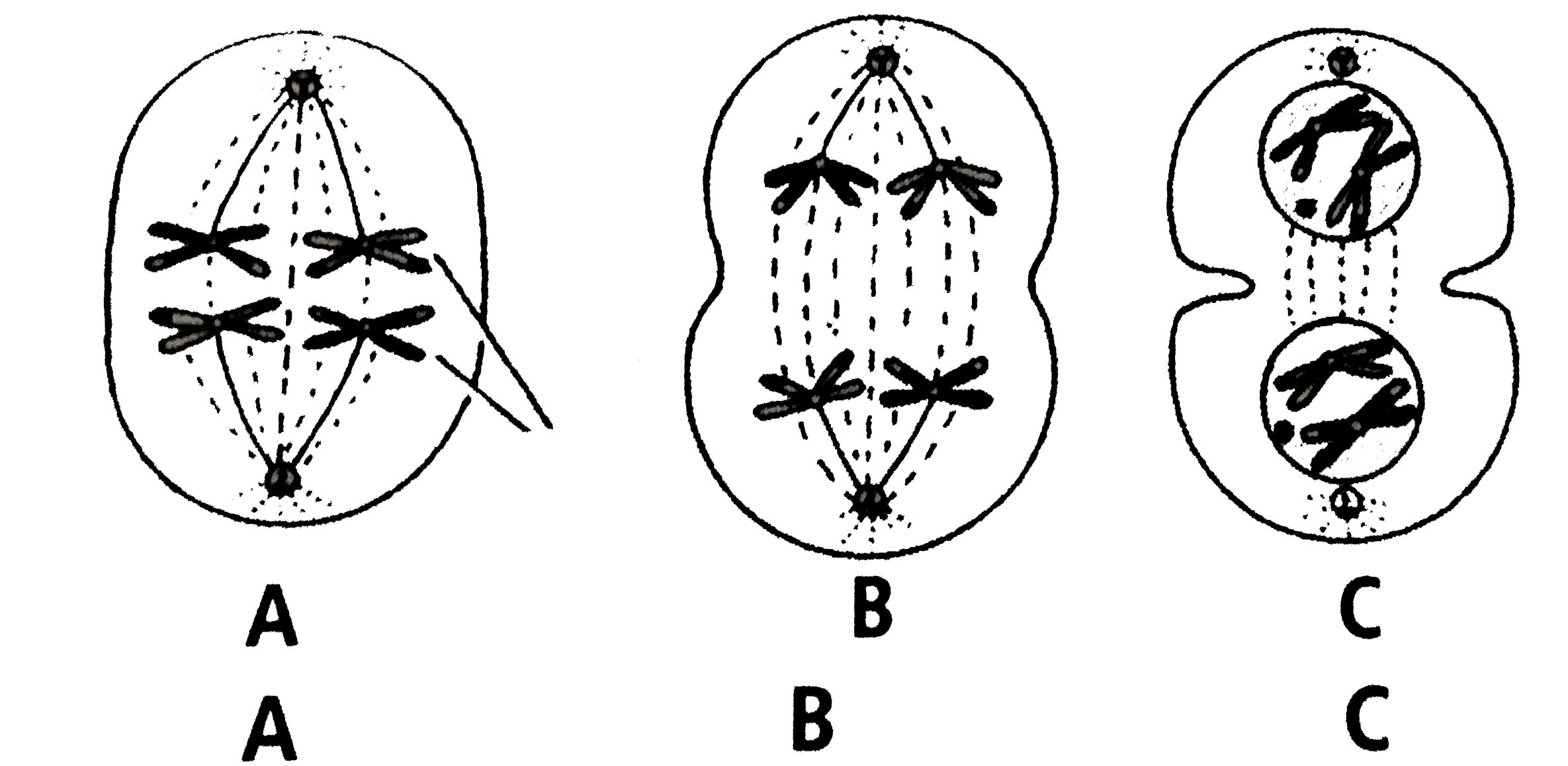 01:21View Solution
01:21View SolutionThe figure given below shows a cell undergoing meiosis.
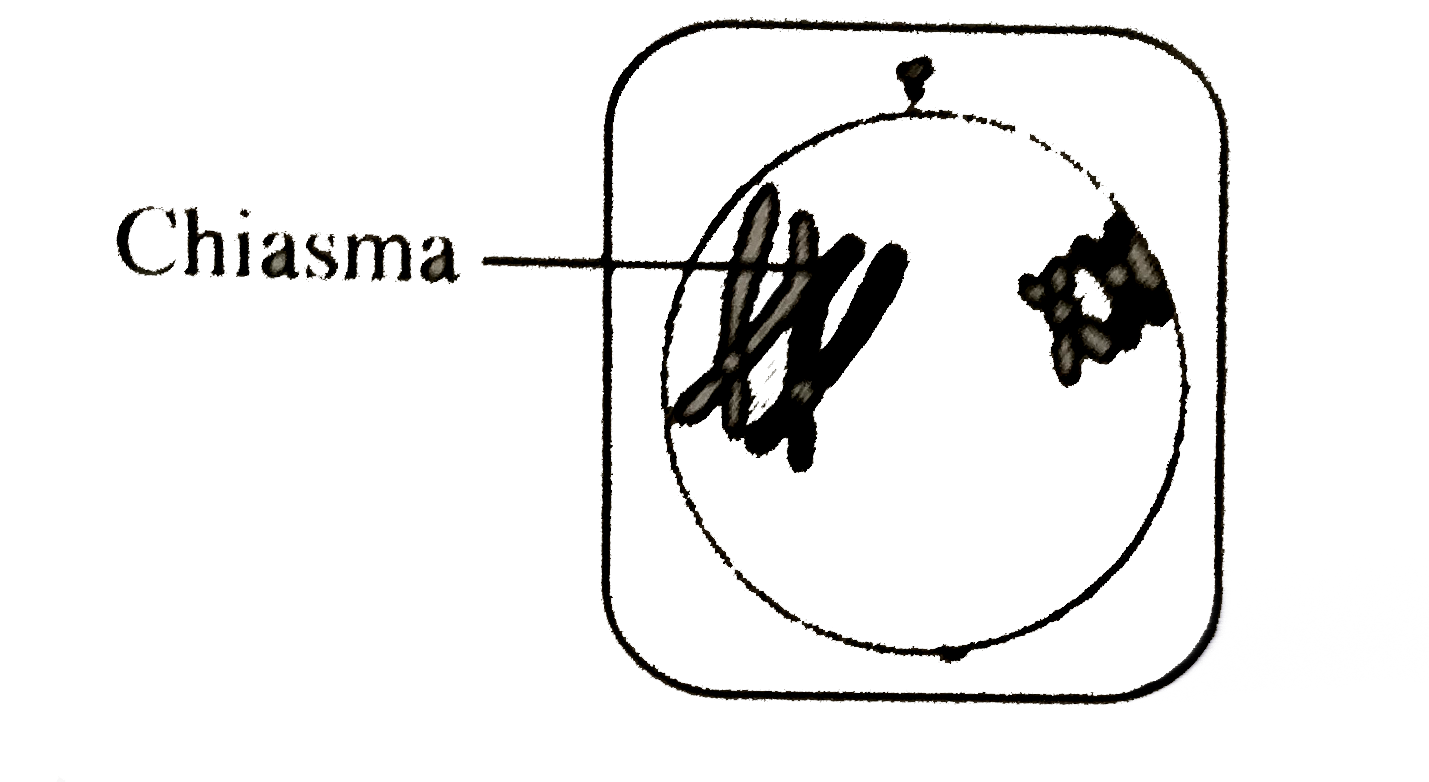
Which of the option below shows the next stage in the process?01:51View SolutionDisjunction refers to
01:43View SolutionLampbrush chromosomes are seen in which typical stage?
01:21View SolutionMathc column I with column II and select the correct option from the given codes.
`{:("Column I","Column II"),("Chromosomes move to equator",(i)"Pachytene"),("Centromere splits and ",(ii)"Zygotene"),("Pairing between homologous chromosomes",(iii)"Anaphase"),("Crossing over between homologous chromosomes",(iv)"Metaphase"):}`01:41View SolutionDuring meiosis I, chromosome number
02:15View SolutionRefer to the given stages A,B,C and D of meiosis I and select the incorrect statement regarding them.
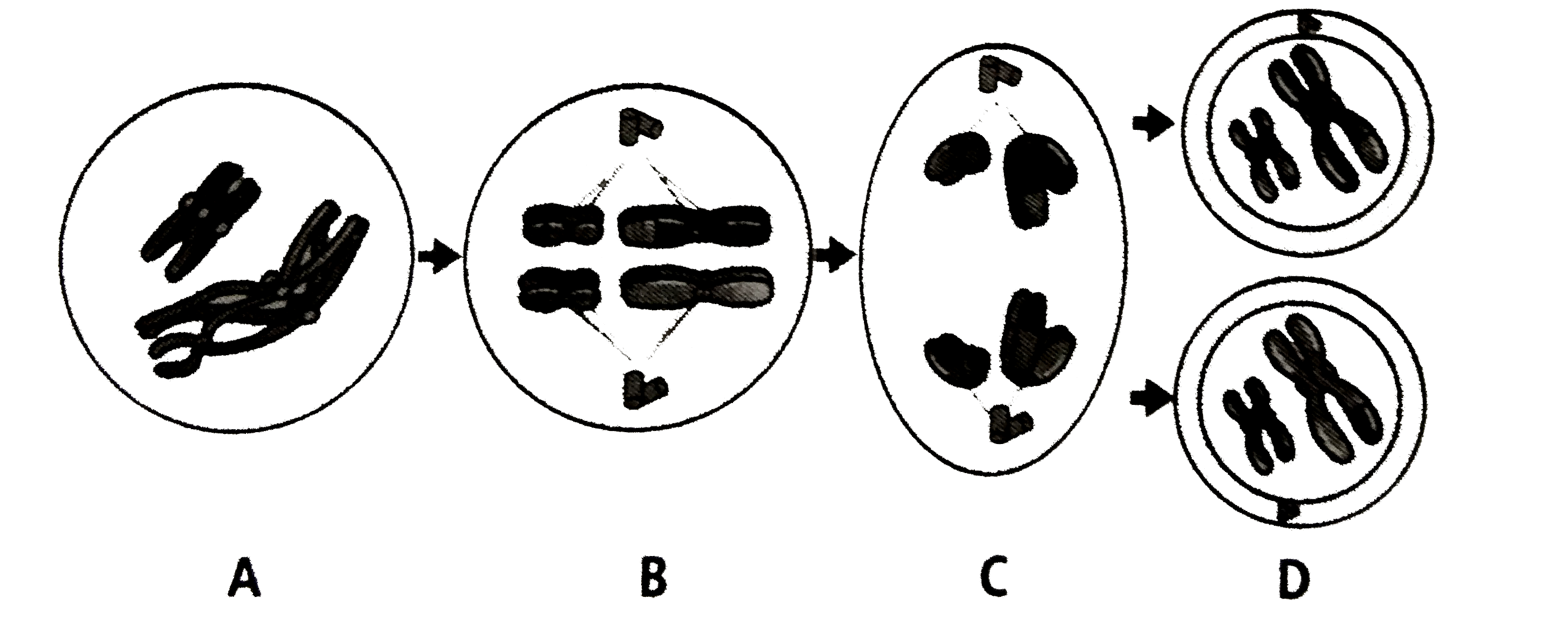 03:03View Solution
03:03View SolutionDuring meiosis I in humans, one of the daughter cells receives
02:00View SolutionThe number of chromosomes is reduced to half during
01:42View SolutionFour different steps that occur during meiosis are given in the following list.
(i) Complete separation of chromatids
(ii) Pairing of homologous chromosomes
(iii) Lining up of paired chromosomes on equator
(iv) Crossing over between chromatids
Select the correct sequential arrangement of the steps.01:41View SolutionSelect the incorrectly mathced pair.
02:00View SolutionSplitting of centromere and hence separation of chromatids occur during
01:52View SolutionIf gametes are produced after reduction division, they are termed as
00:57View SolutionIf 2n=4, then identify the figures A,B and C, as per the following codes and select the correct option
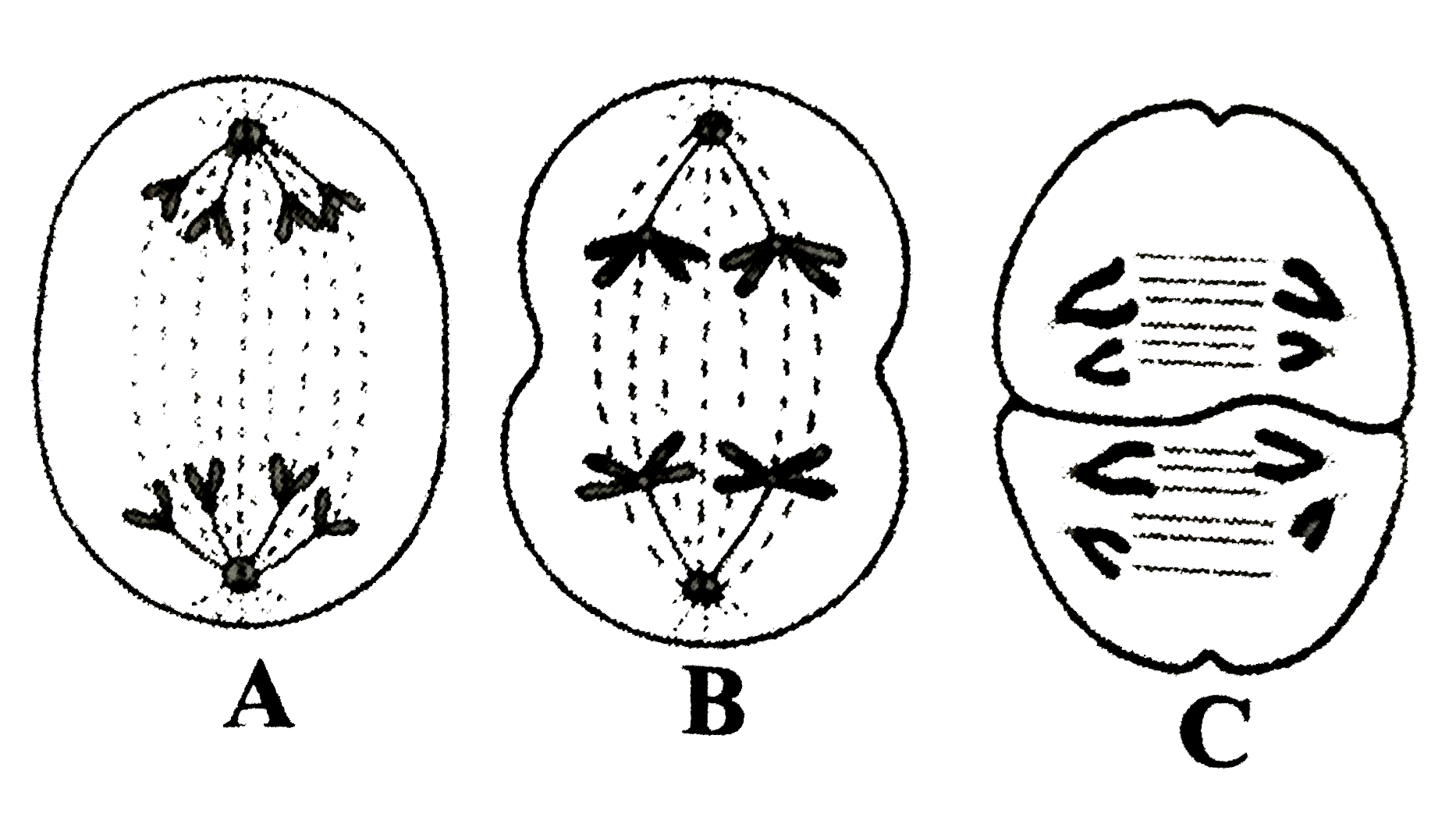
Anaphase of meiosis I=(i)
Anaphase of mitosis =(ii)
Anaphase meiosis II =(iii)02:12View SolutionWhat does (i) and (ii) represent in the given flowchart? Perent cell `overset(M-I)rarr` 2 Daughter cells `overset(M-II)rarr` 4 Daughter cells
02:30View Solution
In above sequence of figures showing different stages of cell division, the missing stage (ii) is01:45View SolutionConsider the given cell at metaphase-I stage undergoing normal meiosis.
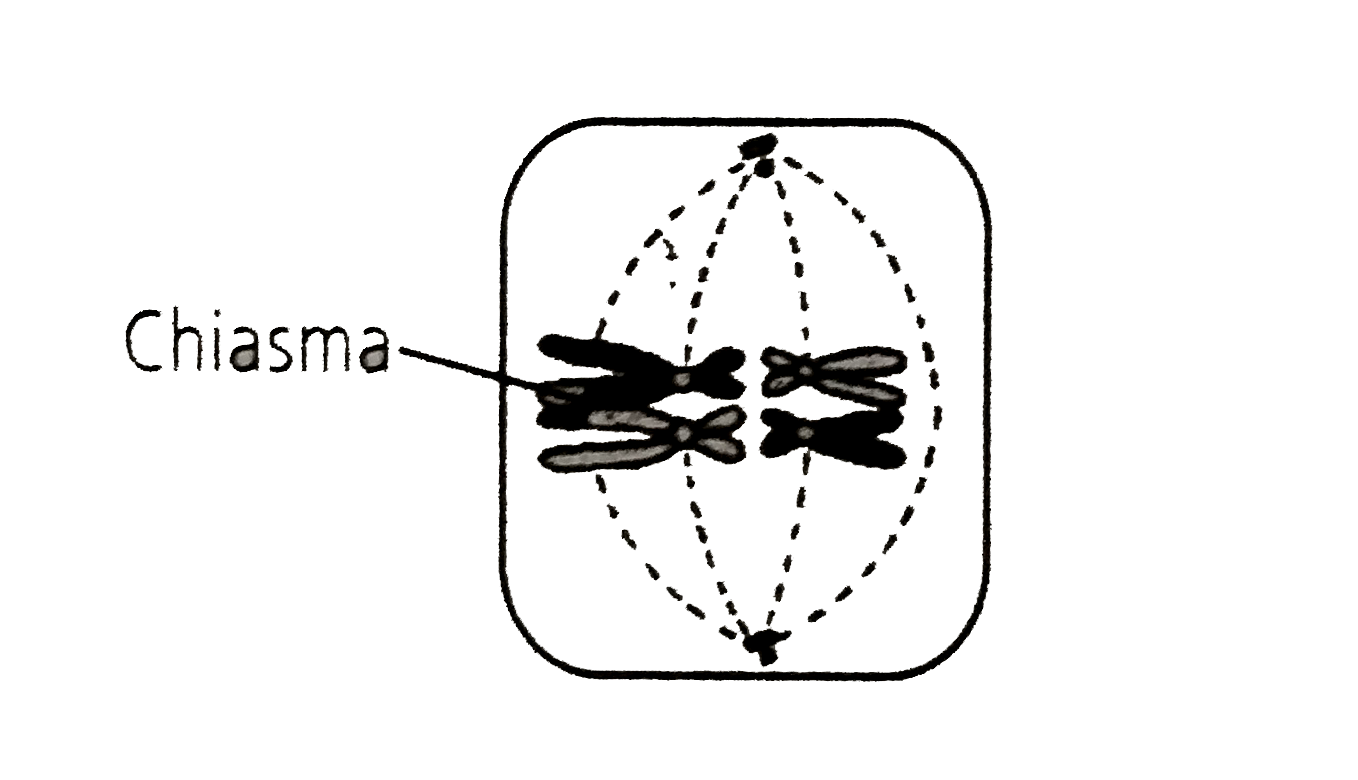
Which of the following gametes will not be formed from this cell?01:46View SolutionWhile in mitosis, the daughter cells resemble each other and alos the parent cell, in meiosis they differ not only fom parent cell in having half the number of chromosomes. But also differ among themselves qualitatively in genetic consitution due to
02:05View SolutionRefer to the the given and select the correct statement
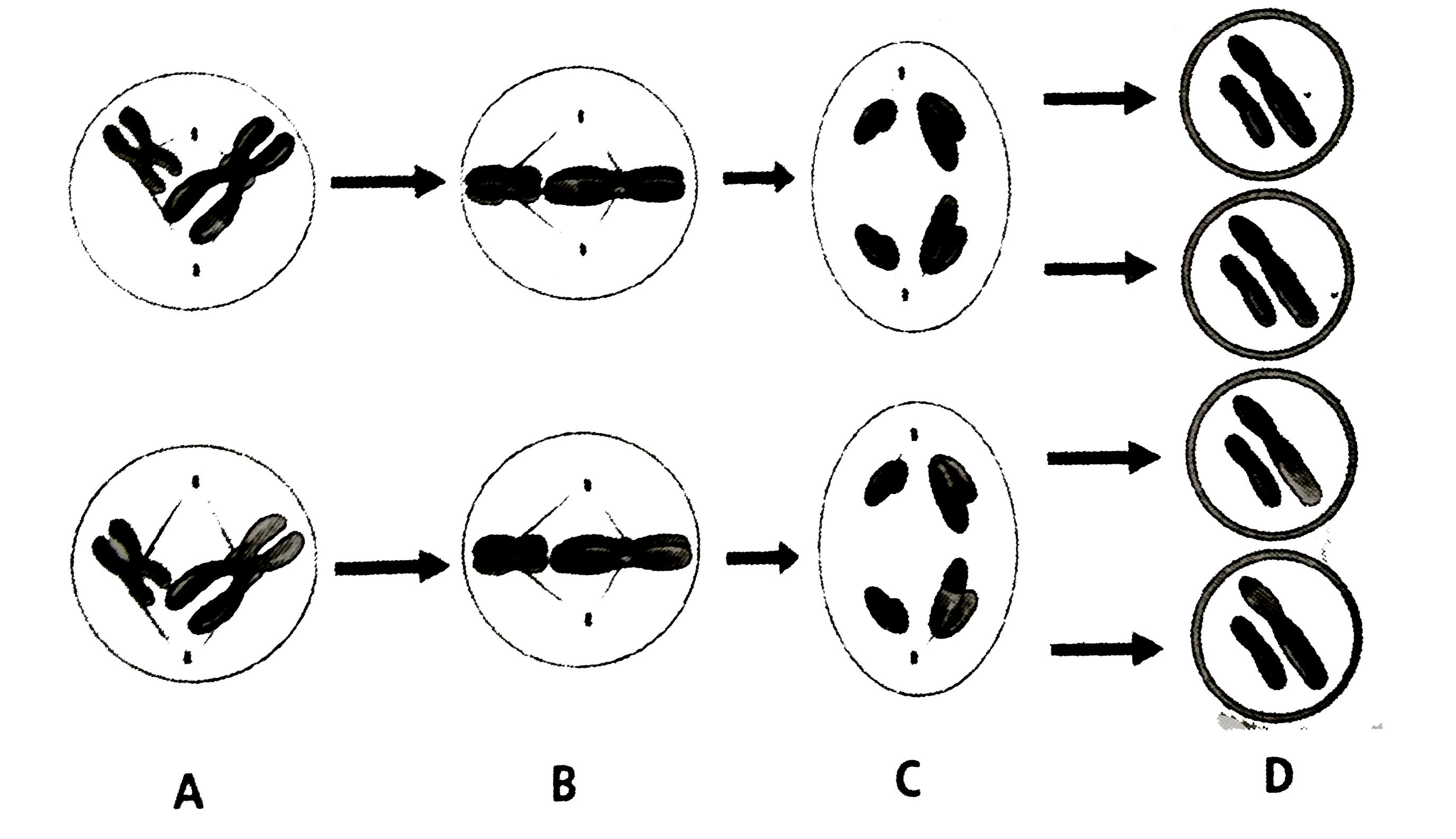 03:34View Solution
03:34View SolutionRefer to the given figure.
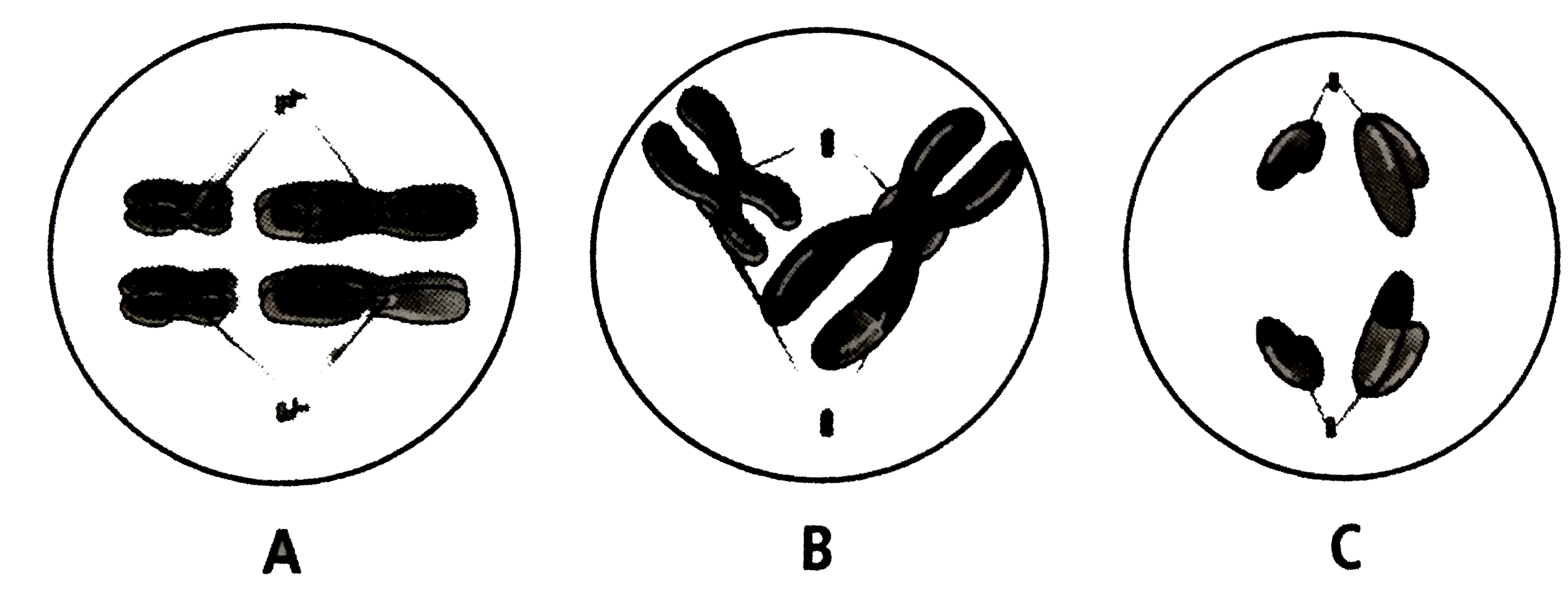
Identify A,B and C and select the correct option.01:36View SolutionRefer to the given figure of cell division.
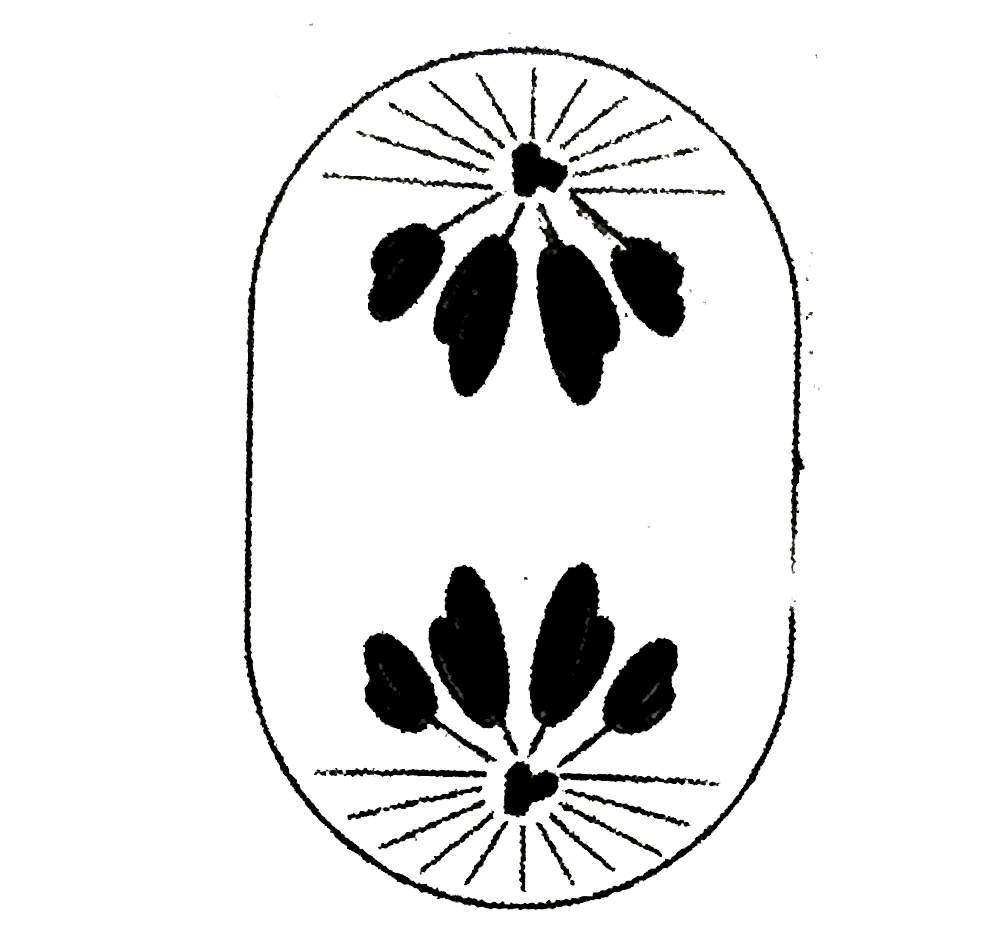
Which of the following options show previous stage of this process?02:23View SolutionIn which of the following ways are mitosis and meiosis similar?
02:07View SolutionAt what phase of meiosis there are two cells, each with separated siter chromatids that have been moved to opposite spindle poles?
02:01View SolutionAn another has 1200 pollen grains. How many PMCs must have been there to produce them?
01:11View SolutionMeiosis does not occur in
00:55View SolutionIn animals meiotic division occurs during gamete formation. This gametic meiosis results in
01:52View Solution
Cell Cycle And Cell Division questions and complete solutions for chapter CELL CYCLE AND CELL DIVISION of MTG BIOLOGY (HINGLISH) of Class 11
